2024 Strategic Plan#

Letter from the City Manager
I am pleased to present the City of Fort Collins 2024 Strategic Plan, a guiding document that directs how the City plans, resources and delivers on our mission to provide exceptional service to an exceptional community.
The plan reflects the diverse perspectives and contributions of community members, businesses, Councilmembers and City staff, and informs the City’s budget and workplans for the next several years. It is a tool that clearly articulates our near- and medium-term community priorities and will set the direction for the 2025-2026 City budget.
Fort Collins is a vibrant, desirable community with many successes and points of pride that the City plans to continue and build upon. At the same time, there are several challenges for us to navigate in the coming years. Housing affordability and availability continues to be a top priority for the community, and we are seeing correlating demographic shifts as many people look toward other communities in Northern Colorado for attainable housing. The City has also set ambitious climate action goals that require thoughtful planning to achieve amidst a changing environmental landscape.
This plan also reflects the importance of community partnerships and regional collaboration to address collective needs in areas such as transportation, infrastructure and climate action to support a Northern Colorado that continues to grow and evolve.
Finally, through City Council’s leadership, this year’s plan has been simplified and streamlined, focusing on the strategic outcomes that we are working to achieve in the community, while leaving flexibility for specific operational decisions to adapt as needed through the next few years.
I’m confident this plan, along with City Council’s adopted priorities and the City’s budgeting process, will be a foundation for the City to make measurable progress in areas that matter deeply to our community.
Sincerely,
Kelly DiMartino,
City Manager
Introduction#
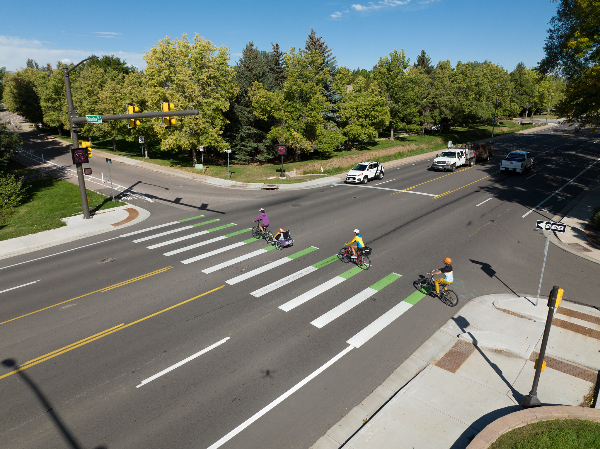
The City of Fort Collins is committed to thoughtful planning and to public participation in government; community input is a vital component that helps shape the City’s Strategic Plan, comprehensive plan (City Plan), biennial budget, and many individual plans, projects and initiatives. It is important that the work we do as a representative local government reflects the values of the community.
While City Plan articulates a long-term community vision and growth framework, the Strategic Plan outlines short- and mid-term objectives, influences the City’s budgeting process, and guides the implementation of the City’s full range of services, including public safety, neighborhood quality, economic vitality, environmental services, parks and open spaces, utility services, transit and transportation infrastructure, engineering and building services, and much more.
The 2024 Strategic Plan outlines key objectives and strategies that link the City Plan vision with the City’s organizational and operational priorities.
- The strategic objectives are not listed in priority order, and it should not be interpreted that a strategic objective early in the list is of a greater priority than one later in the list.
- Each strategic objective includes supplemental bullets that help to define and provide context for the objective; they are intended to be representational but not all-encompassing.
- At the end of most outcome areas, you will find “Connections to related objectives.” These are meant to highlight the linkages between different objectives.
High Performing Government (HPG)#
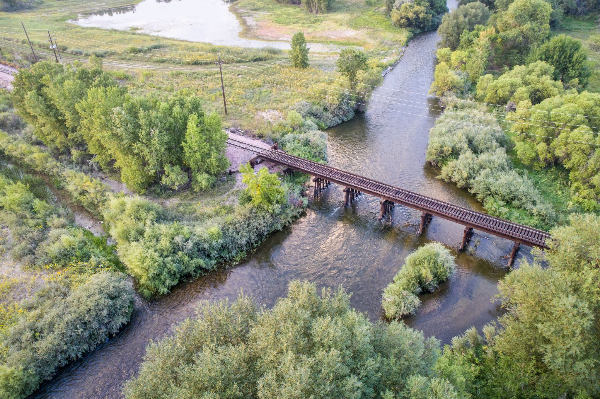
For the City of Fort Collins, being a high-performing government means delivering exceptional services to our community. The City accomplishes this through sound financial management, public outreach and collaboration, creative and resourceful problem-solving, efficient project management, and by attracting, retaining and developing remarkable talent. The foundations of all these efforts are the City’s mission, vision and values, which guide staff every day in how to do their work.
High performance begins with excellent customer service. Streamlining processes and implementing new technologies will help ensure that customers can receive the service they need quicker and easier than before. The City also places significant emphasis on transparency and public engagement. The community should be well-informed about the City’s activities and have meaningful opportunities to provide input that improves outcomes for all.
Of course, none of this is possible without the talented City staff who perform the work. A high-performing government requires that its staff are safe, feel a strong sense of belonging and are empowered to do meaningful work. The City must also take care of the tools, facilities and other assets that are essential to providing exceptional service today, tomorrow and fifty years from now. Strategies for replacing or renewing aging City assets are critical to maintaining high performance.
The City strives for high performance in everything that it does. These HPG objectives address overarching issues that impact the entire organization and serve as a foundation for meeting the City’s remaining strategic objectives.
-
Provide an exceptional customer experience to the community and increase the City’s effectiveness by simplifying processes and delivering modern technologies.
- Council Priority: Make Government More Accessible, Approachable and Fun
- Council Priority: Modernize and Update the City Charter
- Inconsistent and overly complicated City processes negatively impact the customer experience.
- Updates to the City’s website and other digital platforms provide an opportunity to ensure that they are accessible to the entire community.
- As our flexible work practices continue to adapt and evolve, the City is committed to providing exceptional and reliable customer service.
-
Build trust with our increasingly diverse community through meaningful engagement and by providing timely access to accurate information.
- Council Priority: Develop a Hughes Site Master Plan
- The voices and perspectives of marginalized community members have been historically underrepresented in the City’s public engagement efforts.
- The evolving media and communications landscape requires pursuing innovative avenues of engaging with and informing our community.
- Effective and meaningful public engagement includes listening and responding to input and depends on establishing mutual understanding with those who choose to participate.
- Increasing voter turnout provides insight into the opinions of residents through the democratic process.
-
Deliver an exceptional employee experience by attracting, developing and retaining diverse talent and fostering a culture of employee safety, belonging and empowerment across the organization.
- The City continues to face challenges with attracting and retaining talent in certain sectors.
- The region’s high cost of living increases pressure on competitive pay.
- Developing a diverse talent pool and increasing representation in both the broader workforce and at the management level remains a major focus.
- The City’s efforts to simplify processes and deliver modern technologies will have beneficial impacts on the employee experience.
-
Incorporate a management strategy for all new and existing City assets that addresses deferred maintenance and accessibility.
- As the City’s assets age, renewal and replacement are critical to maintaining and elevating service standards.
- Developing and implementing an asset management strategy is fundamental to the long-term sustainability of City services.
- Successful and efficient asset management requires improved coordination among City departments on capital projects.
- New funding provides an opportunity to perform necessary maintenance and replace deteriorating assets.
- Renewing the ¼-cent street maintenance tax will help maintain the high quality of the City’s transportation network.
- Asset management includes preserving and maintaining a safe, healthy and resilient urban canopy.
Culture & Recreation (C&R)#

Cultural and recreational opportunities are elemental to Fort Collins’ community identity and help create a desirable community where people can live and play. Residents consistently place a high value on these programs and services, believing the City should continue its strong investment in these amenities. The City’s park and trail systems are highly valued and heavily used. The planned buildout of the trail system is a high priority for residents and will create further connectivity across Fort Collins and throughout Northern Colorado. Additionally, the City believes that connecting residents to nature is fundamental to a high quality of life.
Cultural and recreational facilities and programming provide residents opportunities to lead enriched and healthy lives and support overall community wellness. Arts and culture are enjoyed by residents and visitors alike. Similarly, parks, trails and natural areas provide beautiful public spaces that foster physical activity and create opportunities for creativity, reflection and leisure. The quality of parks, trails and natural areas, as well as arts, culture and recreation programs and opportunities create a sense of pride among residents, while also drawing visitors and revenue into Fort Collins. Open space and access to nature are defining characteristics of Fort Collins, supporting physical and mental health while strengthening the long-term resilience of the region and its population.
-
Make City arts, cultural and recreational programming more inclusive to reflect the diversity of our community.
- In the 2023 Community Survey, 63% of respondents reported the quality of arts and cultural opportunities as good or very good, which is a recent increase, but below historical averages.
- Programming can be within City facilities, as well as throughout the community.
- Artistic and cultural opportunities are essential to a vibrant and creative community; engaged and equitable participation and inclusion in those opportunities are core community values.
- Effective communication strategies are necessary to help residents understand how to learn about and access currently available programming.
- Emerging trends and opportunities for all ages and abilities need to be considered as the community evolves.
- Consultation and collaboration with local and regional community organizations are a key success factor to identifying gaps and opportunities.
- The City maintains a strong commitment to enhancing access to nature.
-
Implement criteria and prioritization to manage assets and replace equipment that will revitalize parks and recreational facilities, as the planned buildout of the parks and trails system continues.
- Parks, trails, and cultural and recreation opportunities are highly valued and used by residents.
- Utilize new dedicated funding to make necessary improvements and updates to meet design standards and maintain these as highly valued neighborhood amenities.
- Aging parks should periodically undergo a redesign or comprehensive upgrade to respond to new park standards and changing community expectations.
- Equipment replacement and overall asset management should include understanding modern service expectations as the community evolves.
-

Economic Health (ECON)#
Fort Collins benefits from a resilient local economy with strong existing businesses and industries combined with diverse and evolving job opportunities and business formation. We strive to create programs and resources that enable the local economy to withstand and lessen outside pressures, bounce back from downturns quickly, and potentially avoid the impact of regional, national and global economic forces. We take pride in our thriving local businesses, entrepreneurs and innovators who create wealth and opportunity retained in our community.
The economic health of a community impacts income, education, employment, community safety, quality of life and social support. A strong, healthy economy means community members have better access, choices and opportunities. Those are essential to our community’s social, environmental and economic wellbeing. The ability for businesses and industries to start, sustain and renew within Fort Collins creates long-term resiliency.
In late 2023, City Council approved the 2023 Economic Health Strategic Plan. This ambitious plan aims to redesign economic health on a triple-bottom-line basis, develop a “both/and” approach to Main Street businesses and Primary employers, support underserved/underrepresented business owners, redefine the City’s role in supporting workforce development, apply the City’s commitment to equity and inclusion to economic resilience, and champion the global and local impact of innovation in industries like life sciences and climate technology.
The City works collaboratively with local and regional partners to create an environment that supports necessary conditions for economic vitality. Delivering efficient and transparent City services coupled with strategic infrastructure investment supports economic resilience. The City remains committed to continuously improving processes that impact our local businesses, including the development review and permitting process and City utility services, including Connexion broadband service.
-
Foster diverse and attractive employment opportunities, remove barriers to local businesses and bolster economic mobility by facilitating workforce development that aligns businesses drivers with worker capability.
- Council Priority: Pursue an Integrated, Intentional Approach to Economic Health
- To support a better customer experience during business creation and mitigate the rising regulatory cost of doing business in Fort Collins, the City can evaluate removing barriers for business by streamlining processes and becoming less siloed in its communication.
- Life sciences, clean energy, biotech and other industries in close alignment with City values and goals can be important drivers of innovation and contributors to the local economy.
- Collaboration with educational and institutional partners is needed to create and execute a unified regional workforce and economic mobility opportunities.
- The Economic Health Strategic Plan establishes goals to increase business owner demographic representation, increase five-year business survivability, add 1,800 jobs in targeted sectors and increase representation within those sectors.
- Continuing to expand the City’s Connexion services while finding innovative ways to leverage the network across Fort Collins and in the region can be a business attraction tool.
-
Deliver City utility services in response to climate action objectives and opportunities and targeted reliability and resiliency levels, and make significant investments in utility infrastructure while communicating and mitigating cost impacts to the community where possible.
- Maintaining reliability is critical as PRPA implements its Integrated Resource Plan and distributed energy resources are integrated into the electric grid.
- Water storage capacity is needed to ensure water rights can be fully utilized to meet future demand and drought resiliency needs.
- The benefits of reliable infrastructure such as water distribution, wastewater collection/treatment, and flood protection extend well beyond economic impact and have ties to community safety and environmental health.
-
Environmental Health (ENV)#

Fort Collins prioritizes a healthy and sustainable environment. The City takes the lead in innovative environmental programs, including watershed stewardship, water efficiency, urban development with minimal impact, stormwater management, tree preservation and energy policies. Other initiatives involve natural areas, river restoration, waste reduction, air quality, climate action, sustainable purchasing, dark sky preservation, distributed energy resources and high-performance buildings.
The City has set ambitious climate goals: an 80% reduction in carbon emissions by 2030 and carbon neutrality by 2050. The Our Climate Future (OCF) Plan guides us toward a carbon-neutral, zero-waste and 100% renewable electricity future while enhancing equity and resilience. We’re intensifying efforts to achieve these goals, including an 80% reduction in 2030 greenhouse gas emissions, providing 100% renewable electricity by 2030, and reaching zero waste by 2030.
Given our semi-arid climate and the increasing impact of climate change on our watersheds, we recognize the importance of resilience and adaptation. Fort Collins Utilities and other utility districts are dedicated to protecting local watersheds and adhering to regulatory standards. The City’s Natural Areas Program continues to conserve natural areas and open lands. It prioritizes stewardship, including habitat restoration and visitor experience. The focus is on local, foothills, community separator and regional areas.
-
Implement the Our Climate Future Plan to advance the City’s greenhouse gas, energy and waste goals; reduce air pollution; and improve community resilience.
- Council Priority: Accelerate Zero Waste Infrastructure and Policies
- Council Priority: Reduce Climate Pollution and Air Pollution Through Best Practices, Emphasizing Electrification
- Actively working together and building on existing partnerships with local, regional, state and national affiliates is necessary to achieve desired Our Climate Future goals and outcomes such as: decrease greenhouse gas emissions by 80% below 2005 baseline levels by 2030; ensure 100% renewable electricity provision by 2030, utilizing both grid and local sources; and attain zero waste, or achieve 100% landfill diversion, by 2030.
- Engaging all parts of the community in solutions to increase accessibility and community consciousness of recycling, xeriscaping and other environmental programs can raise participation.
- Implementing mode shifts advances the City’s climate and Vision Zero goals by reducing the number of vehicle miles traveled.
- Accelerating building electrification aligns with the City’s pursuit of clean energy sources and lowering building energy consumption, which is responsible for more than two-thirds of the community’s emissions.
-
Sustain the health of the Cache la Poudre River and regional watersheds while delivering a resilient, economically responsible and high-quality water supply for all Fort Collins residents.
- Council Priority: Protect Community Water Systems in an Integrated Way to Ensure Resilient Water Resources and Healthy Watersheds
- Collaborating with partners and attaining regional commitments to assess and support river and watershed health is crucial for success.
- Proactively managing the high costs of acquiring water rights and storing raw water ensures the provision of an adequate and affordable water supply for everyone.
- The Water Efficiency Plan and Water Shortage Action Plan guide strategies for water demand management and water conservation.
- The health of the river requires collecting wastewater and ensuring it is treated safely.
-
Expand, restore and maintain the Natural Areas land portfolio to improve habitat conditions across the community and ensure equitable access to nature.
- Amidst escalating costs, the City must actively seek partnerships with local, regional and national organizations to bolster land conservation and restoration efforts.
- The City is challenged to maintain investments in restoration and built infrastructure to fulfill stewardship responsibilities for the existing land portfolio amidst budget constraints and changing environmental conditions.
- Programs like Nature in the City can continue efforts to protect and expand naturalized landscapes on City-owned properties and throughout the community.
-
Neighborhood & Community Vitality (NCV)#
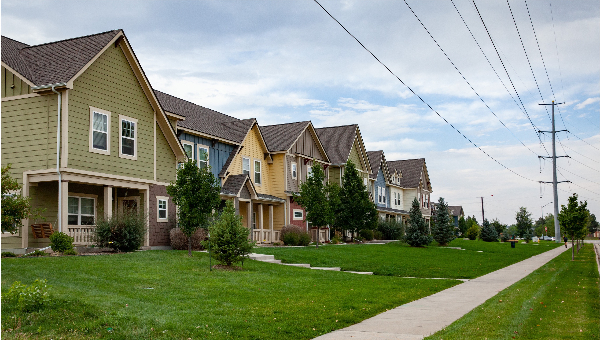
In Fort Collins, neighborhood and community vitality means building strong communities that foster a sense of belonging, connectedness and provide a supportive environment where diversity is celebrated and everyone can thrive. Vibrant neighborhoods offer opportunities for social interaction, collaboration, collective problem-solving, empowerment and ownership among residents. Vibrant neighborhood centers attract investment and resources, leading to improved infrastructure, amenities and economic opportunities for residents.
Housing affordability has been a priority in Fort Collins for decades and, as highlighted in City Plan, is a key element of community vitality. As Fort Collins continues to grow, many are struggling to afford stable, healthy housing within the city. Implementing the strategies of the Housing Strategic Plan, adopted in 2021, will address high priority outcomes such as increasing the overall housing supply, mix of housing type, preserving the affordable housing we have, increasing housing stability and advancing toward equitable outcomes, especially for historically excluded community members.
The concept of 15-minute cities emphasizes the importance of proximity and accessibility in everyday living and urban design. In a 15-minute city, essential human services, amenities and recreational opportunities are all within a short walking, cycling or riding distance from one’s home, promoting sustainability, community engagement and quality of life. Moreover, the 15-minute city model promotes economic resilience by supporting local businesses and entrepreneurs, as well as improving accessibility to job opportunities for residents of all socioeconomic backgrounds.
-
Increase housing supply, type, choice and affordability to address inequities in housing so that everyone has healthy, stable housing they can afford.
- Council Priority: Operationalize City Resources to Build and Preserve Affordable Housing
- Fort Collins’ population is expected to grow to 250,000 by 2040, which will drive significant need for housing units throughout the community. The Housing Strategic Plan provides guidance on next steps.
- Fort Collins is focused on enhancing the quality of life and sense of belonging in all neighborhoods by connecting neighbors to each other and to City services, building social equity, inclusion, and fostering harmonious relationships.
- The challenge of keeping up with affordable housing options necessitates that the City support efforts to preserve and enhance mobile home parks as a source of affordable housing and to create a safe and equitable environment for residents.
- The City continues to address the need for regulations and procedures to be clear and predictable to ensure new development efficiently advances adopted City plans and policies.
- The City will need to advance development efforts in the Growth Management Area in order to see a measurable increase in housing supply and type, and to meet the goal of building 282 units per year to have 10% of all housing inventory as restricted affordable housing by 2040.
-
Support community partner efforts to address priority human service issues like poverty and mental health, and to make homelessness rare, brief and non-recurring.
- Council Priority: Improve Human and Social Health for Vulnerable Populations
- The social issues that partner agencies address are wide-ranging, complex and systemic. A strategic, collaborative approach will ensure programmatic effectiveness and efficiencies, add agency capacity, eliminate redundancy, and identify and better serve disadvantaged areas and groups.
- The City’s core role has been and continues to be strengthening partnerships, funding programs and developing policy in coordination with community agencies that provide a wide range of human services and homelessness services.
- According to the Homeless Management Information System (HMIS) that is administered by the Continuum of Care, as of January 2024, approximately 530 community members are experiencing chronic homelessness in Fort Collins. This indicates that chronic homelessness declined about 16% in 2023. Despite this progress, efforts need to be coordinated to address the myriad challenges that lead to homelessness.
- Continued innovative, collective efforts across agencies are needed to reduce incidents of, and impacts from, disruptive and unwanted behaviors, working closely with the community’s partner agencies to offer creative approaches that balance compassion and consequences.
-
Identify and remove systemic barriers and advance equity so that persons of all identities, including race, ethnicity, religion, sexual orientation, gender identity, gender expression, age, mental and physical abilities, and socioeconomic levels can access programs and services with ease and experience equitable outcomes.
- Council Priority: Improve Human and Social Health for Vulnerable Populations
- Identifying and actively working to remove systemic barriers will help address the historical root causes that have created generational inequities for vulnerable and disadvantaged groups.
- As the cost of living in Fort Collins increases, low- and moderate-income households are struggling to afford necessities and participate in City programs and services.
- Related to the high cost of living, increased and targeted outreach efforts and supportive customer experiences are needed to assist community members in participating in income-qualified services, improving accessibility to City and community programs for low- and moderate-income households.
- There is an increase in requests from community members eager to build a sense of belonging for the City to commit resources to creating experiences that promote inclusion and celebrate cultural diversity in the community.
- As there are sections of the community that do not have access to digital equity services, the City is developing methods to prioritize connectivity services to under-resourced neighborhoods.
- To advance equity for all and apply a data-informed approach to making policy, program and service updates, City teams are growing their practice to systematically gather, analyze and interpret qualitative and quantitative data, disaggregated by racial and social identities and additional equity indicators, to identify barriers, decrease inequities and increase access for all.
-
Remove obstacles to build interconnected Neighborhood Centers to accelerate progress toward our goal for everyone to have daily goods and services available within a 15-minute walk or bike ride from their home.
- Council Priority: Advancing a 15-Minute City by Igniting our Neighborhood Centers
- Innovative neighborhood outreach and engagement efforts that help gather data from a diverse range of communities on needs, interests and expectations will be necessary for teams to develop strategies and actions for implementing adopted plans.
- Preparing to build 15-minute neighborhood centers, City teams will need to analyze neighborhood-level geographic data to assess hyper-local needs. It is important to understand population density and demographics; locations of essential amenities; public spaces; and the quality, safety and accessibility of walking, biking and public transit networks.
- In developing 15-minute neighborhood centers, City planning initiatives will have the opportunity to assess environmental health impacts such as how to increase walking and biking mobility options, lower emissions and increase healthy opportunities for residents through reduced air pollutants.
- Building physical neighborhood connectivity will require the City to consider complex infill and redevelopment projects that offer significant opportunity to contribute to vibrant walkable and bikeable neighborhoods and centers.
- According to the National League of Cities, “the goal of the 15-minute city is to provide convenient and equitable access to necessities like healthcare, schools, grocery stores, jobs, and greenspace.”
-
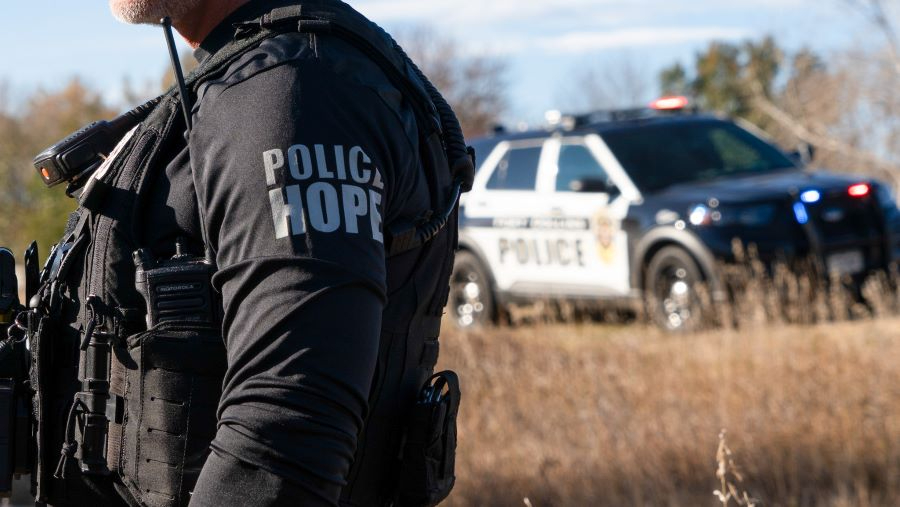
Safe Community (SAFE)#
Fort Collins takes pride in its commitment to cultivating a secure and thriving community, a place where individuals can seamlessly live, work and enjoy life. We are dedicated to creating a community that prioritizes safety, resilience and inclusivity with a forward-thinking approach that aligns with the aspirations of our community members.
The integration of cutting-edge technology is a cornerstone in the City’s strategy, aimed at elevating preventative measures, investigative techniques and communication channels. The emphasis on cybersecurity underscores the City’s dedication to safeguarding the digital infrastructure and data of its residents.
The City places a premium on the immediate actions taken by entities such as Police Services and Poudre Fire Authority, recognizing their substantial contribution to residents’ perception of safety and overall community wellbeing. A well-functioning Municipal Court and judicial system are recognized as integral components in maintaining the high standards of safety expected in our community.
Furthermore, the City prioritizes the development and maintenance of reliable infrastructure, encompassing flood protection systems and water storage, treatment and distribution facilities. Emergency preparedness is approached with a strategic lens, incorporating best management practices and long-term planning to ensure the resilience of critical infrastructure.
Community education plays a vital role, covering diverse aspects such as community policing, emergency prevention and preparedness, fire prevention and awareness, and regulatory frameworks alongside strategic infrastructure investments. Collaboration with regional, state and federal partners is a key component, fostering a comprehensive emergency management system aimed at minimizing and effectively responding to emergency situations.
-
Enhance overall community safety and foster increased trust in public safety services and the municipal justice system through innovative service delivery models.
- Ongoing partnerships support key enforcement and education programs, such as mental health, substance abuse prevention, detoxification, victim assistance, youth programs, bike safety, county jail management, efforts to reduce repeat crimes, fire safety and animal control.
- A diverse community requires new communication strategies and non-traditional partnerships to build trust and help residents understand available resources for safety.
- Utilizing local, regional and federal resources is crucial to comprehensively address safety issues.
- As Fort Collins continues to grow, the City will need to innovate and adapt to meet evolving community expectations for public safety services, including law enforcement, fire and rescue, and comprehensive emergency communication and preparedness.
- Innovative service delivery means coming up with new and clever ways to provide services. Fresh ideas, smart strategies and new technology can help improve services and customer satisfaction.
-
Enhance safety and security on public and private property and protect City infrastructure and sensitive data from emerging security threats.
- The physical safety of residents in public spaces and on private property is paramount.
- The City’s reliance on evolving technology for core operations and service delivery underscores the need for robust cybersecurity measures to safeguard City assets, information and customer privacy. Cybersecurity involves cyber audits, awareness training and digital access control.
- The Community Survey indicates that fewer residents feel safe at parks and recreation facilities than before the pandemic. The City is committed to enhancing the community’s safety across public amenities to help ensure a secure and enjoyable environment for residents.
- Providing and maintaining reliable utility services and infrastructure directly preserves and improves public health and community safety.
-
Transportation & Mobility#
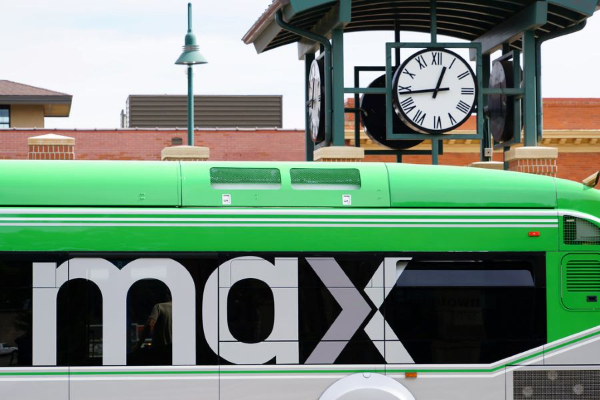
The transportation system is a key component of nearly all aspects of the City of Fort Collins. The system provides the connecting fabric among residences, employment, schools and shopping. It is critical for economic success and commerce, interconnected with land use, and impacts the City’s Our Climate Future and healthy living goals. It is also a key aspect of advancing City priorities around access and equity. The success of a high-quality and well-functioning multi-modal system is a community differentiator and reflected in quality-of-life performance measures.
The Transportation Master Plan, approved by City Council in 2019, describes six core components of a sustainable transportation network, all of which are intended to guide Fort Collins toward realizing the overall transportation vision over 20 years. These components provide a comprehensive framework for assessing current network conditions and inform where Fort Collins can enhance its mobility programs and investments to achieve broader-reaching outcomes. These components were closely evaluated and used to inform these strategic objectives, focusing on near-term actions.
The six core components are:
- Transportation Infrastructure: Planning a physical transportation network that supports multimodal travel.
- Mobility & Travel Choices: Considering the role each transportation mode plays in shaping the Fort Collins mobility network.
- Health & Equity: Ensuring the transportation network plays a key role in advancing social outcomes.
- Innovation: Understanding emerging technologies and how new trends are influencing the movement of goods and people.
- Safety: Eliminating serious injuries and fatalities on Fort Collins’ roadways.
- Sustainability & Resiliency: Shifting transportation away from creating harmful environmental impacts toward being a resource for improving environmental outcomes.
-
Make significant progress toward the City’s Vision Zero goal to have no serious injury or fatal crashes for people walking, biking, rolling or driving in Fort Collins.
- Council Priority: Advance a 15-Minute City by Accelerating Our Shift to Active Modes
- The City adopted a goal in 2016 to have no fatal or serious injury crashes within the transportation network. This requires appropriate programs, policies, educational resources and infrastructure improvements that work to reduce the overall number and severity of crashes.
- In 2023, City Council adopted the Active Modes Plans, which lays out the needed investments to ensure that alternatives to driving—which include biking, walking and rolling—are safe and accessible to all residents.
- In 2023, City Council also approved 10-year transportation capital project priorities that identify the key corridor, intersection and crossing improvements, and other projects that will directly work to increase the safety, efficiency and equitable operation of the transportation network for all modes of travel.
- Quality infrastructure that is in a good state of repair is necessary for the safe operation of the transportation network. The City has relied on dedicated funding from the street maintenance tax, due to expire in 2025, as a primary way to ensure a consistent street quality standard.
- Working closely with local schools is necessary to implement strategies that will ensure safe routes to school and protect our student population.
- Ensuring our transportation network is safe for everyone requires enforcing traffic and other laws with targeted and innovative strategies in priority areas.
-
Increase Transfort access and ridership by ensuring the City’s transit services provide safe, reliable and convenient alternatives to driving.
- The Transit Master Plan was updated in 2019, but the realities of operating a transit agency have changed substantially since the COVID-19 pandemic; ridership still has not returned to pre-pandemic numbers. The plan should be optimized to reflect post-pandemic realities, including new strategies to achieve the transit vision while still considering frequency and prioritizing key routes.
- Fort Collins voters approved a new sales tax to support transit initiatives through 2050. These resources will provide significant funding support toward some of the capital projects needed to increase transit frequency and stabilize operations.
- The Community Survey indicates that fewer residents always or usually feel safe on Transfort than did before the pandemic. Increasing ridership will require ensuring that transit is a safe transportation alternative.
- Colorado State University students account for a critical portion of Transfort’s ridership. Continued partnership with the university and students will be critical to achieving increases in ridership.
- Achieving many of the City goals outlined in City Plan, Our Climate Future and the Housing Strategic Plan will require increasing transit ridership.
-
Transform the parking system to better align supply and demand and incentivize sustainable outcomes in a place-based manner across the city.
- A strategic approach to the City’s parking system and requirements can help achieve many other goals related to housing, climate and transportation. Incentivizing behaviors to make progress in these spaces requires a context-specific approach based on a number of factors including density, economic activity and availability of structured parking.
- In Downtown specifically, the existing parking model incentivizes additional vehicle trips as the spaces that are ideal for longer-term parking (garages) cost more than the spaces better suited for short stays (on-street). This results in a revenue model that is not sustainable for the long-term maintenance of the parking structures or the Parking Services team and increases congestion Downtown.
- Successfully implementing transportation demand and targeted land use strategies can reduce automotive congestion and the increasing need for associated parking across the community.
- In 2023, City Council supported advancing a workstream to look at new models for pricing Downtown parking.
-
Appendix A: Performance Measures#
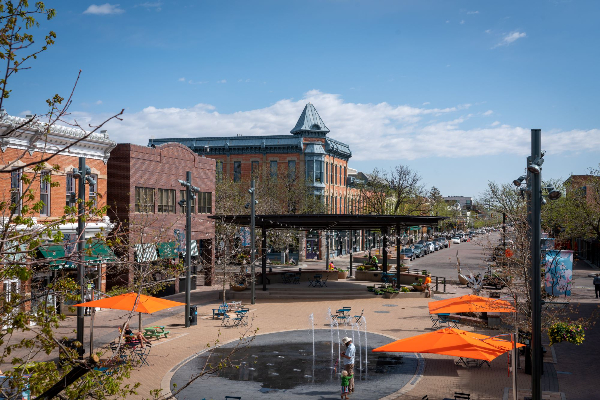
The City of Fort Collins is committed to being a data-informed organization.
Using quantifiable data and analysis, the City tracks and measures success in achieving the Key Outcomes and Strategic Objectives defined in this plan. This includes establishing appropriate targets for each metric, tracking the actual performance of each one over time, and regularly reviewing and discussing the performance.
Community Dashboard
The City’s focus on tying metrics to specific outcomes began in 2013. Staff, working with City Council, developed the Community Dashboard where each of the seven outcome areas has four to seven performance metrics that track, at a high level, the City’s progress in achieving the desired outcome. Every measure on the dashboard is measured against a target. The Community Dashboard is updated quarterly and can be found online at fcgov.com/dashboard. The measures listed below within each outcome are current as of publication of this document. Definitions of each measure can be found on the dashboard.
-
- Accuracy of Cumulative Budgeted Expenses ($ millions)
- Actual Cumulative Revenue Compared to Budget ($ millions)
- Average Response Time of Cases Submitted to Access Fort Collins
- City Employee Cumulative Turnover Rate
- City Employee Safety – Days Away Restricted or Transferred (DART) Rate YTD
- City Employee Safety – Total Recordable Injury Rate (TRIR) TYD
-
- Gardens on Spring Creek – Total Cumulative Participation
- Golf Courses – Total Cumulative Participation
- Lincoln Center – Total Cumulative Participation
- Museum of Discovery – Total Cumulative Participation
- Natural Areas Programs – Cumulative Participation per Capita
- Paved Trails - Cumulative Number of Visits
- Recreation Programs – Total Cumulative Participation
-
- Average Response Time to Police Priority I Calls
- Drinking Water Compliance Rate (% Days)
- Number of Injury/Fatal Crashes
- Part 1 Crimes in Fort Collins (per 1,000 population)
- Percent of Time Fire PFA Intercedes Before Flashover (contained to room of origin)
- Percent of Time PFA Fire Personnel are On-Scene Within 7 Minutes 20 Seconds in the Urban Area
Appendix B: Long-Term Financial Plan#
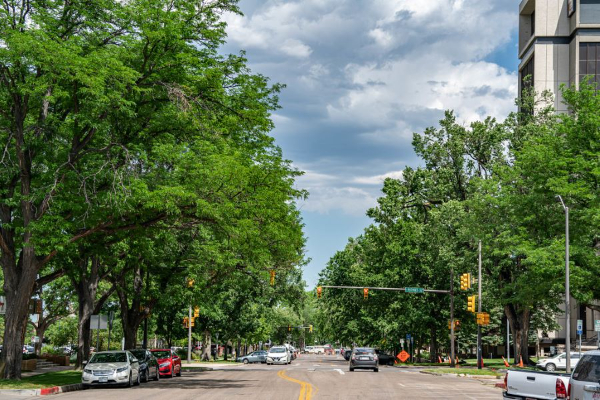
The City updates the Long-Term Financial Plan (LTFP) outlook every two years as part of the Strategic Planning Process. The scope of this biennial update is limited to the City’s governmental services, which excludes utilities enterprise funds. The utilities enterprise funds update their long-term plans in a separate but concurrent exercise. The objective of the LTFP update is to highlight potential challenges facing the City and aid in decision-making on strategies that span the longer term (5-10+ years). These planning and scenario exercises then inform the biennial Budgeting for Outcomes (BFO) process through which specific services, programs and projects are funded.
Over the past two years, the City continued recovery from the economic challenges associated with the COVID-19 pandemic that began in 2020. The negative revenue impacts that were experienced in 2020 and 2021 continued to improve in 2022 and 2023, as the overall economy benefitted from the large federal stimulus aid packages. These favorable revenue outcomes were balanced out on the expense side, as many sectors of our local economy experienced inflationary pressures, leading to higher labor, supply and capital costs. Additionally, supply chain disruptions and persistent labor shortages also contributed to higher costs and schedule adjustments. Overall, the City’s finances remain in excellent condition. Moody’s once again re-affirmed the City’s Aaa credit rating in the fall of 2023 (ranking in the top 5% nationally).
-
Background#
The 2024 LTFP Baseline Scenario assumes most likely outcomes under current operating conditions and service delivery levels. Unidentified productivity increases, process improvements and technology savings are not included in the baseline scenario. Additionally, no outlier impacts (e.g., natural disasters, unanticipated severe recession, war, civil breakdown) are forecast to happen. The impacts of the higher costs and higher revenues experienced over the past few years during the pandemic recovery are factored into the 2024 LTFP update. The underlying analysis utilizes historic data from the past 20 years, macroeconomic outlooks, correlation analysis and unique drivers at departmental and functional levels to provide a view of what leadership needs to plan around for long-term growth.
-
Although the City has stabilized the organization’s near-term financial position, it still faces continued pressure to balance the longer-term needs with the limited sources of funding options. During the previous LTFP update, the City had identified significant challenges associated with future funding for park life-cycle and maintenance costs, transit/transportation infrastructure, affordable housing options, ambitious climate and energy goals, and other Council priorities. The City has continued to add personnel capacity to keep up with the demand for services from our community of residents, businesses and visitors. The adopted two-year budget for 2023 and 2024 included approximately 42 additional full-time equivalent (FTE) employees to help serve these ever-increasing community needs.
Similar to the 2022 LTFP update, the 2024 LTFP contemplates the impacts of taking on these additional expenditures and explores options to fund these programs and services. The 2024 LTFP analysis continues to provide a Baseline Scenario and also builds up a Gap Closure Scenario that factors in four additional sets of assumptions:
- Adjustments for historic budget underspend
- Addition of new expenditures for currently underfunded programs and services
- Longer-term growth-related programs and services
- Addition of identified and potential
-
The Baseline Scenario forecast includes the following primary revenue and expenditure assumptions:
Primary Revenue Assumptions
- Sales Tax: Gowth of 2.5% based on taxable sales historical average, increased taxable sales base and reduced near-term inflationary impacts
- Use Tax: Growth of 3.6%, similar to prior forecasts
- Property Tax: Incorporates steep valuation increases from 2020 to 2024 that have significantly increased the base; growth of 2.0% moderates with Consumer Price Index (CPI)
- Capital Grants: 2.0% increase, very project specific; tied to long-term CPI growth
- Shared Revenues: County and State distributions, 1.3% growth, similar to historical rate for past 15 years
- Cultural, Park, Recreation and Natural Areas Fees: In line with average historical rate of 3.4%
Primary Expenditure Assumptions
- Salaries and Wages: Combined growth rate of 3.7%; includes CPI-driven wage increases plus projected FTE increases
- Benefits :Combined growth rate of 4.7%; includes 1% over CPI-driven rate increases plus projected FTE increases
- Professional and Technical: Growth of 3.3%, correlated to CPI and sales tax
- Supplies and Other Purchased Services: 1% growth
- Infrastructure: 5% growth rate, correlated to sales and use tax
The 2024 LTFP Baseline Scenario (see Exhibit 1) shows our projected revenues, expenditures and future estimated year-end fund balances. Overall, long-term revenues are expected to increase at an approximately 2.5% compound annual growth rate (CAGR). Expenditures are expected to grow by 3.3% CAGR over this same period. The projected gap between revenues and expenditures could exceed $40 to 50 million per year by 2032, with the cumulative effect of this deficit spending eroding fund balances to less than $20 million.
-
![A graph chart]()
Exhibit 1
-
The City is required to balance the budget during the biennial BFO process and cannot deficit spend beyond the utilization of anticipated revenues and existing available fund balances. Historically, there is an approximately 5% average underspend in actual expenditures compared to budgeted expenditures each year. Given the requirements of the City’s budgeting process, this result is expected and provides a requisite cushion level against potential revenue shortfalls in the short-term. As in the prior LTFP update, this 5% amount was removed from the Gap Closure Scenario forecast, providing a more normalized view of expected expenditure levels for existing services and programs.
During 2022 and 2023, City staff and the Council worked to refine the longer-term ongoing needs of the City as well as reflect updated Council priorities. The Gap Closure Scenario adds projected costs to account for identified needs for parks and recreation, transit additions, affordable housing programs and climate initiatives. The annual requirement for these items has been estimated at more than $40 million per year, with cumulative expenses totaling over $350 million by the year 2032.
The staff and Council update included a rigorous analysis of potential funding alternatives and trade-offs. The culmination of these efforts was placing two funding options on the November 2023 ballot:
- A 0.50% sales tax increase to fund parks and recreation programs, climate initiatives and transit projects
- A property tax increase to fund affordable housing needs
The sales tax initiative was approved by the voters with an effective date of January 1, 2024. While not projected to cover all the estimated needs of the covered programs, these funds are the basis for specific project planning and funding consideration for the BFO process later this year. The property tax initiative was not approved by the voters and the affordable housing shortfalls currently remain unfunded. This new sales tax revenue stream is included in the Gap Closure Scenario.
In addition to the current maintenance and program expenditure shortfalls, Fort Collins’ continued growth will bring on additional needs for funding. Specifically, identified areas of potential need are the Civic Center Master Plan, developing future community and neighborhood parks, and potential annexation costs related to the East Mulberry area. These expenditures may approach $15 to 20 million per year by 2032.
The City organization will continue to look for ongoing cost containment strategies to combat the growth and inflationary impacts. However, staff will need to continue looking for other funding sources – some potential combination of taxes, fees and/or grant revenues. For illustrative purposes in the Gap Closure Scenario, a combination of unidentified new sources was estimated at $25 million per year beginning in 2028.
The Gap Closure Scenario is highlighted in Exhibit 2, which provides greater stabilization of fund balances over the longer-term time horizon.
-
![A graph chart]()
Exhibit 2
-
The City made significant strides during 2023 and 2024 in addressing some of the funding gaps identified in prior Strategic Plan and LTFP updates, but many challenges remain. Prioritizing programs and services will be key to delivering the highest value-added services to the community. Active cost containment will remain a vital component of maintaining our ability to deliver desired levels of service.

